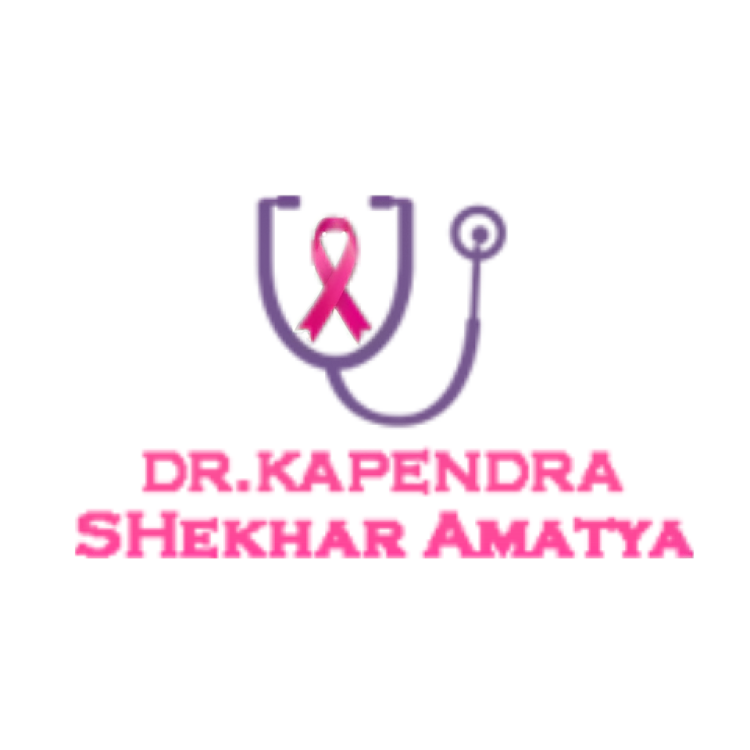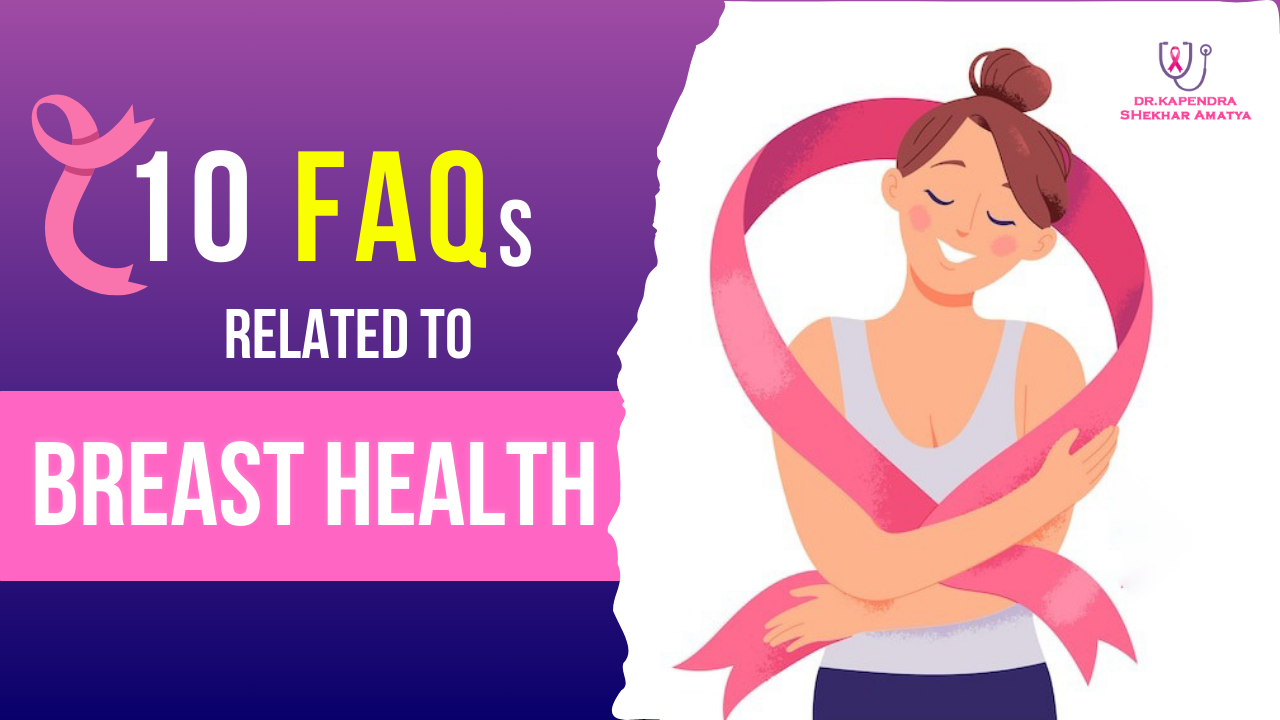Breast health is a critical aspect of overall well-being, yet it is often surrounded by misconceptions and a lack of awareness. Dr. Kapendra Shekhar Amatya, a leading oncologist in Nepal, has been at the forefront of raising awareness and providing expert care in this domain. In this blog, Dr. Kapendra Shekhar Amatya addresses some of the most frequently asked questions related to breast health, aiming to educate and empower individuals to take proactive steps towards better health.
1. What Are the Early Signs of Breast Cancer?
Early detection is crucial for successful treatment of breast cancer. Dr. Kapendra Shekhar Amatya emphasizes that knowing the early signs can save lives. These signs include:
- A lump or thickening in the breast or underarm area.
- Changes in the size, shape, or appearance of the breast.
- Dimpling or puckering of the skin.
- Nipple discharge, particularly if it is bloody or occurs without squeezing.
- Persistent pain in a specific area of the breast.
- Redness, swelling, or scaliness of the breast or nipple.
If you notice any of these symptoms, Dr. Kapendra Shekhar Amatya advises seeking medical attention promptly for a thorough evaluation.
2. How Often Should I Perform a Breast Self-Examination (BSE)?
Dr. Kapendra Shekhar Amatya recommends performing a Breast Self-Examination monthly. This practice helps you become familiar with the normal look and feel of your breasts, making it easier to detect any changes.
Here’s a step-by-step guide from Dr. Amatya:
- Visual Inspection: Stand in front of a mirror with your shoulders straight and arms on your hips. Look for any changes in size, shape, or symmetry.
- Palpation While Standing: Raise one arm and use the pads of your fingers from the opposite hand to check the breast in a circular motion.
- Palpation While Lying Down: Lying down spreads the breast tissue evenly, making it easier to feel for abnormalities.
Dr. Kapendra Shekhar Amatya emphasizes that while self-examinations are important, they should not replace clinical exams and regular screenings.
3. Are All Breast Lumps Cancerous?
Not all breast lumps are cancerous, and many are benign. Dr. Kapendra Shekhar Amatya explains that common non-cancerous causes of breast lumps include:
- Fibroadenomas: Solid, smooth, and non-cancerous growths common in young women.
- Cysts: Fluid-filled sacs that may feel tender.
- Fibrocystic Changes: Hormonal fluctuations can cause lumpiness, especially before menstruation.
However, Dr. Kapendra Shekhar Amatya stresses the importance of consulting a doctor for any lump to rule out malignancy.
4. What Are the Risk Factors for Breast Cancer?
Dr. Kapendra Shekhar Amatya identifies several risk factors associated with breast cancer:
- Age: The risk increases as you grow older, particularly after 50.
- Family History: A strong family history of breast or ovarian cancer can increase your risk.
- Genetic Mutations: BRCA1 and BRCA2 gene mutations significantly raise the risk.
- Hormonal Factors: Early menstruation (before age 12) or late menopause (after age 55) can increase lifetime exposure to estrogen.
- Lifestyle Factors: Smoking, alcohol consumption, obesity, and lack of physical activity are modifiable risks.
Dr. Kapendra Shekhar Amatya advises regular screenings and adopting a healthy lifestyle to mitigate these risks.
5. Does Breastfeeding Reduce the Risk of Breast Cancer?
Yes, breastfeeding can reduce the risk of breast cancer. According to Dr. Kapendra Shekhar Amatya, breastfeeding lowers estrogen levels, which may reduce the chances of developing hormone-receptor-positive breast cancer. The longer a woman breastfeeds, the greater the protective effect.
6. What Should I Know About Mammograms?
Mammograms are a critical tool for early detection of breast cancer. Dr. Kapendra Shekhar Amatya shares the following guidelines:
- Routine Screening: Women aged 40 and above should undergo mammograms every 1-2 years.
- For High-Risk Individuals: Women with a family history or genetic predisposition should start screenings earlier, as advised by their doctor.
- What to Expect: A mammogram involves compressing the breast between two plates to take X-ray images. While it may be slightly uncomfortable, it is quick and highly effective.
Dr. Kapendra Shekhar Amatya highlights that mammograms can detect tumors too small to be felt, making them an invaluable tool for early detection.
7. Can Men Get Breast Cancer?
While breast cancer is less common in men, it does occur. Dr. Kapendra Shekhar Amatya points out that men should be aware of the symptoms, which include:
- A lump or thickening in the breast tissue.
- Nipple discharge or retraction.
- Changes to the skin over the breast, such as redness or dimpling.
Men should not ignore any changes and should consult a doctor if they notice unusual symptoms.
8. How Can I Maintain Good Breast Health?
Dr. Kapendra Shekhar Amatya recommends the following tips for maintaining optimal breast health:
- Healthy Diet: Incorporate fruits, vegetables, lean proteins, and whole grains into your diet.
- Regular Exercise: Aim for at least 150 minutes of moderate activity per week.
- Avoid Smoking and Limit Alcohol: Both are linked to an increased risk of breast cancer.
- Maintain a Healthy Weight: Obesity, especially after menopause, is a significant risk factor.
- Regular Check-Ups: Schedule annual clinical breast exams and follow your doctor’s advice regarding mammograms.
9. What Are the Treatment Options for Breast Cancer?
Dr. Amatya outlines the following treatment options, which depend on the stage and type of breast cancer:
- Surgery: Lumpectomy (removal of the tumor) or mastectomy (removal of the entire breast).
- Radiation Therapy: Uses high-energy rays to destroy remaining cancer cells.
- Chemotherapy: Administers drugs to kill or slow the growth of cancer cells.
- Hormone Therapy: Blocks hormones that fuel certain types of breast cancer.
- Targeted Therapy: Focuses on specific characteristics of cancer cells, such as HER2.
Dr. Kapendra Shekhar Amatya emphasizes the importance of a multidisciplinary approach tailored to the patient’s unique needs.
10. When Should I See a Doctor?
Dr. Kapendra Shekhar Amatya advises consulting a doctor immediately if you experience:
- A new lump or thickening in the breast or underarm.
- Persistent pain in one part of the breast.
- Unusual changes in size, shape, or appearance of the breast.
- Nipple discharge, inversion, or redness.
- Skin changes, such as dimpling or scaliness.
Early consultation can lead to timely diagnosis and better treatment outcomes.
Final Thoughts
Breast health awareness is vital for both prevention and early detection of potential issues. Dr. Kapendra Shekhar Amatya and his team are dedicated to providing expert care and guidance to individuals in Nepal and beyond. Regular screenings, a healthy lifestyle, and staying informed are key steps to maintaining breast health.


